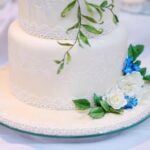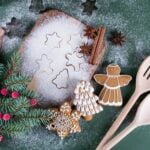Are you looking to elevate your cake decorating skills? Learn how to make royal icing for cake decorating, a crucial component in creating beautiful designs on cakes. Royal icing not only provides a smooth canvas for decorating but also allows for intricate and stunning designs that can impress any crowd.
Royal icing is made from just a few simple ingredients, but it plays an essential role in cake decorating. It acts as the glue that holds decorations in place and can be used to create delicate details and designs that are difficult to achieve with other types of icing. Whether you’re a beginner or experienced baker, mastering the art of royal icing can take your cake decorating to the next level.
In this article, we will explore the process of making royal icing, from preparing the meringue to achieving the right consistency. We will also provide expert tips on adjusting the consistency, preventing air bubbles, and troubleshooting common issues.
Additionally, we will delve into different coloring and flavoring options for royal icing and explore various piping and decorating techniques that can be achieved with this versatile icing. So, let’s dive into the world of royal icing and unleash your creativity in cake decorating.
Ingredients and Equipment
Royal icing is a versatile and essential component in cake decorating, allowing for intricate designs, stunning details, and vibrant colors. To create this fundamental icing, you will need to have the right ingredients and equipment on hand.
To make royal icing for cake decorating, you will need confectioners’ sugar (also known as powdered or icing sugar), meringue powder, water, and clear vanilla extract. These ingredients are essential for creating the base of the royal icing, providing stability and structure for your cake decorations. Additionally, you may also want to have gel food coloring on hand to add vibrant hues to your icing.
In terms of equipment, having a stand mixer or electric hand mixer is crucial for achieving the right consistency in your royal icing. You’ll also need piping bags and various tips to create different designs and styles with your icing. It’s important to have a good-quality offset spatula for spreading the royal icing onto your cakes and creating smooth surfaces. Make sure that all equipment is clean before use to avoid any contamination in your royal icing.
When making royal icing for cake decorating, having the right ingredients and tools at your disposal is essential for success. With these key components in place, you’ll be well-equipped to create beautiful and intricate designs on your cakes using royal icing.
By following these steps step-by-step instructions on how to make royal icing for cake decorating with the right ingredients can ensure a perfect outcome each time you decorate a sweet treat.
Step-by-Step Instructions
To make royal icing for cake decorating, it’s essential to follow a precise set of steps to achieve the perfect consistency and texture. Below is a comprehensive guide on how to make royal icing from scratch.
Preparing the Meringue
To begin making royal icing, start by preparing meringue using meringue powder or egg whites. In a clean, grease-free bowl, beat the meringue powder or egg whites with water until stiff peaks form. This will serve as the base for the royal icing and provide structure and stability to your decorations.
Adding the Sugar
Once you have prepared your meringue, you can gradually add powdered sugar into the mixture while continuing to beat at a low speed. It’s crucial to add the sugar in increments to avoid over-whipping and creating air bubbles in the icing. The amount of sugar needed will depend on the desired consistency of your royal icing – for outlining and details, a thicker consistency is required, while flooding designs will require a thinner consistency.
Achieving the Right Consistency
To achieve the perfect royal icing consistency for cake decorating, it’s essential to pay close attention to its texture and flow. Test the consistency by running a spatula through the icing and observing how long it takes for the lines to disappear. For outlining and detailing, a stiffer texture that holds its shape is ideal, while flooding designs call for a thinner consistency that spreads easily.
By following these step-by-step instructions on how to make royal icing for cake decorating, you can ensure that your creations have beautiful designs with precise detailing and vibrant colors. Mastering these techniques will allow you to create stunning edible works of art that are sure to impress at any celebration or event.
Tips and Tricks
Adjusting Consistency
One of the most important aspects of working with royal icing is achieving the right consistency. Whether you need it to be stiff for outlining and creating intricate designs, or looser for flooding and covering larger areas, getting the consistency just right is crucial. To achieve a stiffer consistency, add more powdered sugar gradually until you reach the desired thickness. Conversely, if you need a thinner consistency, add small amounts of water until you achieve the desired result.
Preventing Air Bubbles
Air bubbles in royal icing can create imperfections in your decorations and designs. To prevent air bubbles from forming while mixing your royal icing, use a spatula to gently fold and mix the ingredients together instead of vigorously stirring. Additionally, allowing your mixed royal icing to sit for a few minutes before using it will help any air bubbles rise to the surface and pop on their own.
Troubleshooting Common Issues
Even experienced bakers and decorators encounter issues with royal icing from time to time. If you find that your royal icing is too runny or not setting properly after decorating your cake, try adjusting its consistency as mentioned above.
If your decorations are crusting over too quickly before you’ve had a chance to complete your design, try covering your bowl of royal icing with a damp cloth while working to keep it moist. Troubleshooting these common issues can save time and frustration in the decorating process.
Coloring and Flavoring
One of the most exciting aspects of working with royal icing is the opportunity to explore different ways to color and flavor it. By adding vibrant colors and delicious flavors, you can enhance the visual appeal and taste of your cake decorations. There are several methods for achieving this, from using natural food colorings to incorporating extracts and other flavorings.
When it comes to coloring royal icing, there are various options available. Traditional gel or powdered food colorings work well and come in a wide range of shades. However, if you prefer to avoid artificial additives, natural food colorings derived from fruits, vegetables, and spices are a fantastic alternative. These natural options can produce stunning hues, from soft pastels to deep jewel tones, without compromising on the quality of the icing.
Flavoring royal icing is another creative avenue to explore. While traditional almond or vanilla extracts are popular choices, there’s a plethora of other flavors you can experiment with to add an extra dimension to your designs. Citrus zest, coffee extract, or even floral essences like rosewater can infuse your icing with unique and delightful tastes that complement your cake perfectly.
By taking the time to carefully consider how you color and flavor your royal icing, you’ll be able to elevate your cake decorating projects to new heights in terms of both visual appeal and taste.
Experiment with different combinations and techniques until you find the perfect blend that reflects your personal style and enhances the overall presentation of your creations.
Piping and Decorating Techniques
Royal icing is a versatile and essential component in cake decorating, allowing bakers to create intricate and beautiful designs on their cakes. One of the key skills in working with royal icing is mastering various piping techniques. Whether you’re outlining a design, flooding areas with color, or adding intricate details, understanding these techniques is crucial for achieving professional-looking results. Below are some popular piping and decorating techniques to help you elevate your cake decorating game.
- Outlining: One of the fundamental piping techniques with royal icing involves outlining the desired design on the cake. To achieve clean and precise lines, it’s important to use a steady hand and consistent pressure on the piping bag. Start by practicing straight lines before moving on to more complex shapes like curves and swirls.
- Flooding: Once the outline has been piped onto the cake, flooding is used to fill in the design with color or a different texture of royal icing. By using a slightly thinner consistency of icing, you can easily fill in larger areas without leaving lumps or uneven surfaces.
- Creating Intricate Details: Royal icing allows decorators to add intricate details such as lace patterns, delicate flowers, or ornate scrollwork to their cakes. To achieve these fine details, decorators use small tips on their piping bags and work meticulously to create stunning designs.
In addition to these techniques, there are countless other ways to use royal icing for cake decoration, including creating 3D effects, adding texture with different piping nozzles, and incorporating edible pearls or glitter for added sparkle. Mastering these techniques takes time and practice but opens up endless creative possibilities for making beautifully decorated cakes.
Storing and Using Royal Icing
Royal icing is a fundamental element in the world of cake decorating, known for its versatility and ability to create stunning designs on cakes. Once you have mastered the art of making royal icing, it’s essential to understand the best practices for storing it and using it effectively in various cake decorating projects. This section will provide valuable insights into how to store royal icing properly and how to use it for different cake decorating techniques.
When it comes to storing royal icing, the key is to prevent it from drying out or becoming too runny. The best way to store royal icing is in an airtight container at room temperature.
It can be stored for up to two weeks, depending on the type of ingredient used. If your royal icing contains egg whites or meringue powder, it can typically be stored at room temperature; however, if you used fresh egg whites, you should store the icing in the refrigerator.
Using royal icing for cake decorating involves various techniques such as piping, flooding, and creating intricate details on cakes. To ensure that the decorations adhere properly and that the icing sets firmly, it’s important to allow each layer of decoration to dry completely before adding another layer. For attaching decorations such as flowers or edible pearls, a small dot of fresh royal icing can act as a glue to secure them onto the surface of the cake.
| Storage Method | Duration |
|---|---|
| Airtight Container at Room Temperature (Egg Whites or Meringue Powder) | Up to Two Weeks |
| Airtight Container in Refrigerator (Fresh Egg Whites) | Varying Timeframes |
Real-Life Examples
In conclusion, royal icing is a versatile and essential component in cake decorating, and mastering the art of making it opens up endless possibilities for creating stunning designs on cakes. By following the step-by-step instructions provided in this article and using the right ingredients and equipment, anyone can learn how to make royal icing for cake decorating.
Additionally, the tips and tricks shared in this article offer valuable insight into achieving the perfect consistency and troubleshoot common issues that may arise. With practice, patience, and attention to detail, anyone can elevate their cake decorating skills with the use of royal icing.
Ultimately, by exploring different coloring and flavoring options, as well as learning various piping and decorating techniques, individuals can unleash their creativity and personalize their cakes with intricate details. The real-life examples showcased in this article serve as inspiration for readers to try their hand at decorating with royal icing and create their own stunning cake designs.
So go ahead, grab your tools and ingredients, follow these guidelines, and let your imagination run wild as you experiment with how to make royal icing for cake decorating.
Frequently Asked Questions
How to Make Royal Icing Quickly?
Making royal icing quickly involves combining confectioners’ sugar, meringue powder, and water in a mixing bowl. Beat the mixture at low speed before increasing to high speed until stiff peaks form.
Can I Put Royal Icing Directly on a Cake?
It is possible to put royal icing directly on a cake. However, it’s important to make sure that the cake has cooled completely before applying the royal icing to prevent it from melting or becoming too runny.
How Do You Harden Royal Icing on a Cake?
To harden royal icing on a cake, you can simply let it air-dry at room temperature for several hours or overnight, depending on the thickness of the icing. Another option is to use a food dehydrator or place the cake in front of a fan to speed up the drying process.

Welcome to my blog about home and family. This blog is a place where I will share my thoughts, ideas, and experiences related to these important topics. I am a stay-at-home mom with two young children. I hope you enjoy reading it! and may find some helpful tips and ideas that will make your home and family life even better!





